Top 12 Things To See And Do In Lisbon
Very few cities – in Europe or elsewhere – are as impressive as Lisbon. Be it its culture of soulful Fado, undulating streets, vintage trams that rattle through them, or the expansive vistas from its vantage points, Lisbon is sure to win the heart of every type of traveler. Just as you think it couldn’t get better, you take a bite of their Pasteis de Nata. A crunch followed by a mouthful of creamy custard and, that’s how this city hooks you for life. Lisbon has perfected the art of allure.
1. CLIMB UP TO SÃO JORGE CASTLE
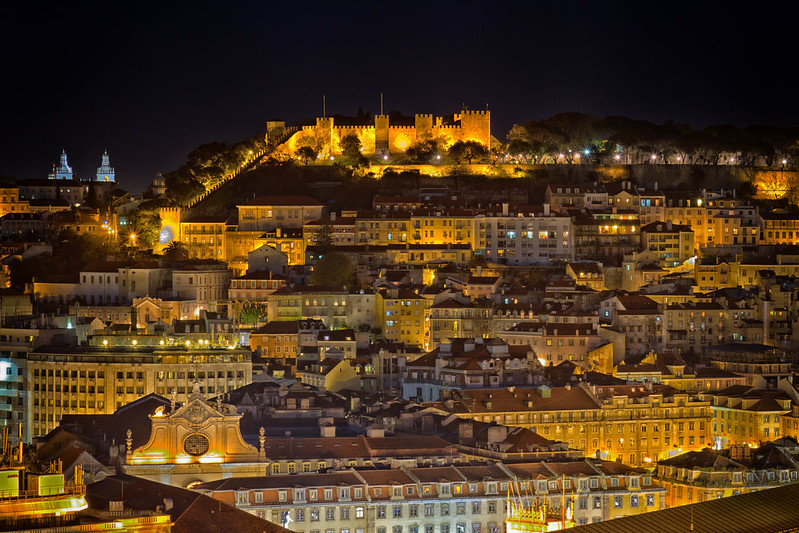
The Sao Jorge Castle looms over Alfama and the city downtown from a strategic location atop the Sao Jorge hill that had served its purpose back in time. It occupies the summit, approachable through the neighborhood of Castelo, and is visible from anywhere in Lisbon, even at night through illumination.
It had been both a fortress and a royal palace, as it was conquered from Romans to Visigoths to Arabs to the Christian crusaders through centuries of its turbulent history.
You can walk its rampart or climb one of its many towers that overlook different parts of the city. You'll find yourself accompanied by half albino peacocks that strut the garden filled with oak and pine trees. Head over to Torre de Ulisses to see a 360-degree real-time view of Lisbon through a camera obscura. If you are there late during the day, stay back to watch the sun go down over Lisbon, turning the city into a beautiful shade of golden.
2. GET LOST IN ALFAMA, THE HEART OF LISBON
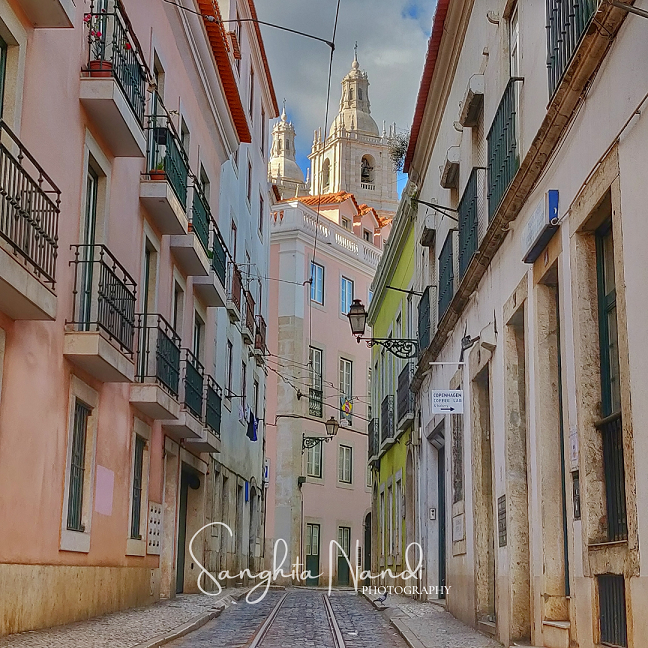
In the shadow of the Sao Jorge Castle, the undulating lanes of Alfama, snaking around tightly packed houses, churches, and heady stairs, create a labyrinth that is best explored by walking and losing your way in it. It is the oldest Lisbon neighborhood dating back to the days of Moorish rule over the Iberian Peninsula.
Entering Alfama is like a step back in time. It entices you with an old-world charm, occupied by its age-old fishermen residents, house balconies with laundry and flower pots, gas street lamps, and the sound of melancholic Fado enriching its air after sundown.
At its most visited square, you would find the vantage point Miradouro das Portas do Sol. Like an outdoor balcony, the place showcases an expansive view of red-roofed Alfama, the Monastery of Sao Vincente de Fora, the Tagus river, and the new docking port of the cruise ships. Next to it is the terrace Miradouro de Santa Luzia that houses a garden and another lookout point over the Tagus.
To save your feet from the exertion of a steep climb, wear flat shoes and adopt a top-down approach, exploring its alleys while descending towards downtown Baixa. Both the iconic tram 28 and the less crowded tram 12, which wind through Alfama, can help you reach one of its higher elevations.
3. WATCH THE SUNSET AT MIRADOURO DA SENHORA DO MONTE
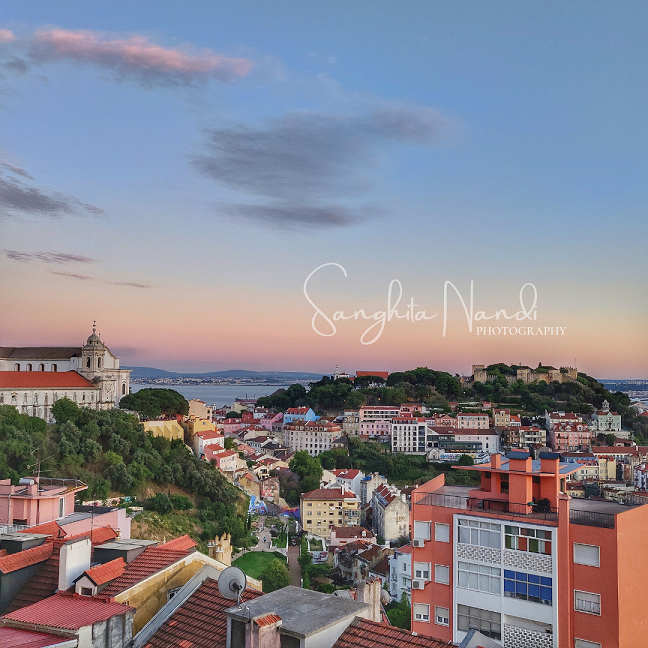
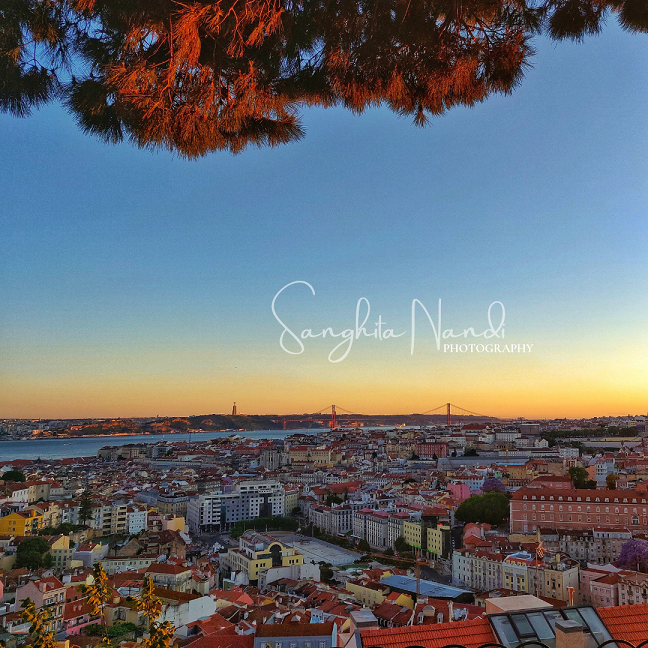
Among all the Miradouros (or viewpoints) of Lisbon, Senhora do Monte deserves a special mention for providing the best view over the city. It is the highest point of Lisbon, rising above the Sao Jorge Castle in elevation. Standing there, you can get an uninterrupted panoramic view, sweeping across Igreja da Graca, the castle, a sea of terracotta roofs till Ponte de Abril bridge and Cristo Rei on the opposite bank of the Tagus river.
Before sunset, you would find couples and photographers nestled on the grass under the pine trees - hand in hand and hand on lenses - waiting for a moment of serenity and perfection.
While there, don't forget to dine at Estamine art food drink, a tiny cafe 100 m from the viewpoint, which is nonetheless perfect. Its intimate home-like setting feels even better as the hosts - Luis and Joice - prepare the food themselves while chatting with their guests.
4. FEEL AWED AT THE CARMO CONVENT

On a November morning of 1755, hundreds of devotees had gathered inside the largest church of Lisbon. It was All Saints' Day, a day of festivities when the ground shook under their feet unexpectedly with what would come to be known as the Great Lisbon Earthquake. With a devastating magnitude of 8.4, there was not much hope left for those people as the roof caved in.
Today the skeleton of the Carmo Convent welcomes devotees and travelers alike into a reminder of its heydays. The roofless central hall and arches open to a view of the blue sky. Its former alter now houses an archeological museum. The imposing gothic church still overlooks the city downtown from Chiado.
It is a commendable architectural feat for a 14th-century structure to stand tall, albeit partially damaged, through one of the deadliest earthquakes in history. Carmo Convent has found its way to thrive through chaos and ruin and deserves a place on your Lisbon itinerary.
5. PARTY OR POSE AT THE PINK STREET
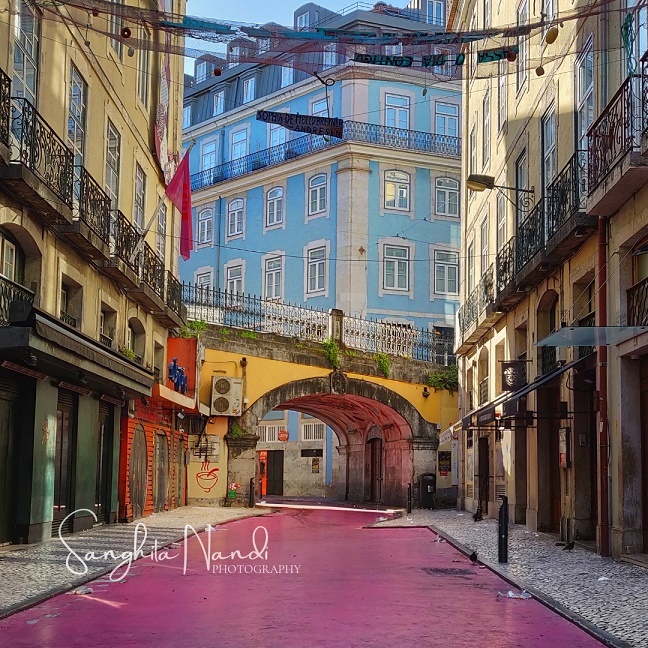
If a place can change dramatically from day to night, that’s Pink Street of Lisbon. Once a haunt of sailors, criminals, and prostitutes, this former red-light district still comes to life every night – but for a different reason. Instead of practices of debauchery, you’ll now find Lisbon’s hippest nightlife in this pink-painted street.
The street, officially called Rua Nova do Carvalho, was given a makeover in 2011 to turn around its scandalous reputation. As brothels and seedy bars closed, in place of them, opened trendy cafes and some of the quirkiest pubs of the city. And like the coolest masterstroke, the once figuratively ‘red’ tainted street was painted pink instead.
If you are not interested in nightlife, you can still visit this street early during the day for an Instagram-worthy shot before the party-goers start arriving.
6. ALTER ALTITUDE WITH BICA FUNICULAR
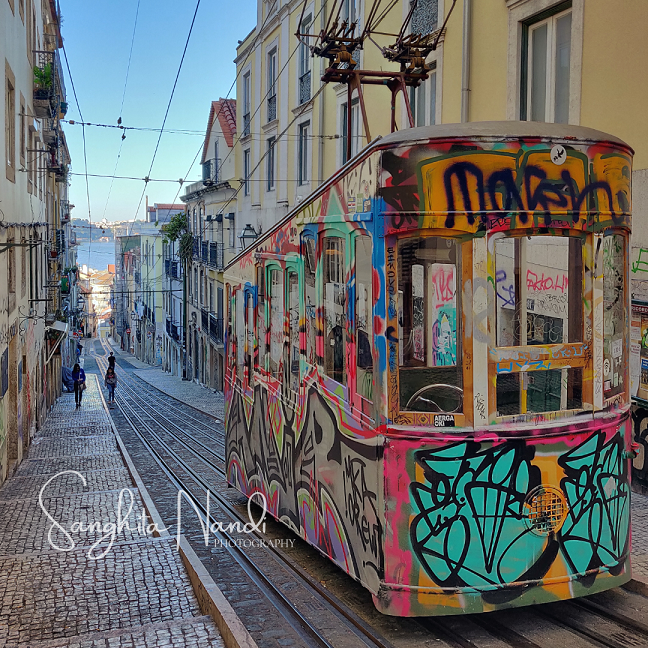
Whether you want to go uphill to Chiado or to descend from there to Pink Street or the Time Out Market, riding the Bica Funicular is the most enjoyable way to alternate between the altitudes.
From the late 19th century, this toy-like colorful funicular has been commuting locals and travelers across a steep incline of Lisbon that can take one's breath away in a literal sense. Sandwiched between buildings on either side of Calcada da Bica Pequena, two cars run in opposite directions from morning till night every day.
These yellow funiculars climbing the slope with the river Tagus in the background is a much-photographed icon of the city. Sometimes by sheer luck, you may spot a funicular car with colorful graffiti painted on it.
If you are a braveheart and have healthy knees, you can also check out the parallel street called Calcada da Bica Grande. Here there is no comfort of an elevator but the challenge of a long flight of stairs through an equally dizzy elevation.
7. RIDE TRAM 28 OR WALK ITS ROUTE
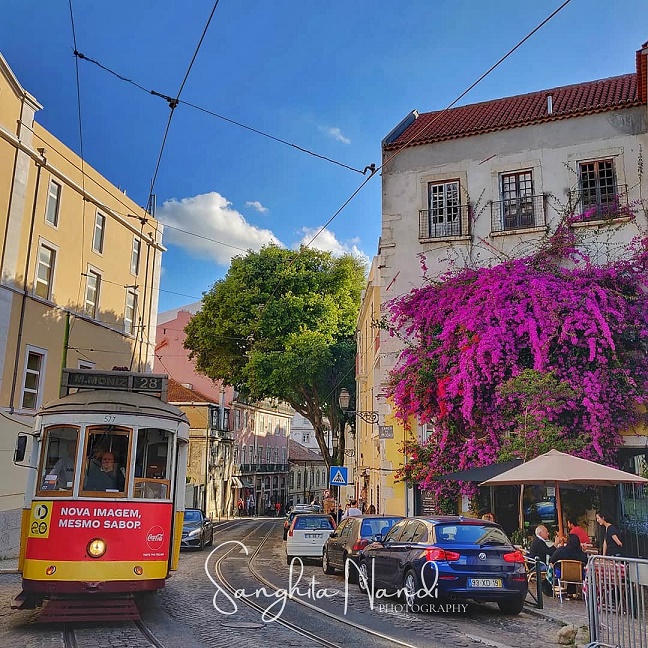
The yellow tram of Lisbon called the E28 usually finds its place in every travel article about this city. It's a reminder of an era long gone with a cheery exterior and interior done in polished wood and brass embellishments. It is a nostalgic experience to sit inside one of these vintage carriages, as it rattles through narrow streets and steep slopes at its own pace, screeching every time it hits the break or takes a sharp turn.
The tram passes through appealing areas like Graca, Alfama, Baixa, and Chiado, giving its riders an all-encompassing city tour, especially to those who are short of time.
That said, it doesn't come without woes. It is a playground for pickpockets who take advantage of the crowd to pull off their stunt. To avoid a crowded tram 28, ride early before 8 a.m., from either of the terminating points, Martim Moniz or Campo Ourique. Keeping a 24-hour day ticket loaded onto a Viva Viagem card is another handy way to skip the time required to buy a ticket on board.
As an ultimate alternative (or if you are a photographer), you can even walk its route, as an E28 passes by you every 10 minutes.
Tram 28 stands by the adage old-is-gold with an advantage over the advanced metro systems when it comes to hilly areas like Alfama, where digging an underground network is complicated.
8. DEDICATE A DAY TO BELÉM AND THE SPIRIT OF EXPLORATION
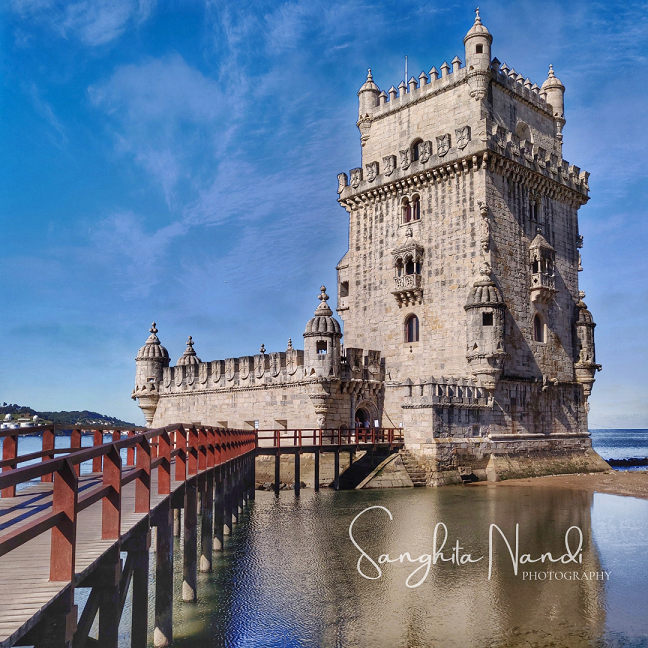
The Pasteis de Belem is reason enough to encourage you to take a trip to Belem, but the place is more than the eponymous egg tarts. Hop on Tram 15E to reach this Lisbon neighborhood, which celebrates the Age of Discovery of Europe and Portuguese contribution to it, with monuments connected to its maritime history.
The first stop is the former hermitage where Vasco Da Gama and his crew had allegedly spent their last night before setting sail to India. The ornamental Jeronimos Monastery was built in its place to glorify their successful discovery. Following that tradition, the monastery soon became a church for Portuguese explorers, and eventually, the final resting place of Vasco Da Gama.
Opposite the monastery stands the Monument of Discoveries. The structure, shaped like the bow of a ship, commemorates discoverers, navigators, cartographers, and writers. A giant compass and a medieval map of the world, called Mapa Mundi, are engraved on the square near the monument.
From here, walk a kilometer ahead to reach Torre de Belem. The former ceremonial exit and entry point of Portuguese seafarers, the tower stands on an outcrop on the Tagus close to the shore. Built as a defensive fort, the Belem Tower had also served as a royal banquet hall, a prison, and a lighthouse during 500 years of its history. Its maritime motif-filled Manueline exterior made of limestone is more intriguing than the interior for which you have to queue up on most days.
Both Torre de Belem and Jeronimos Monastery are UNESCO World Heritage Sites, explaining the crowd outside each, eager to enter the monuments.
9. BINGE ON PASTÉIS DE NATA, REPEAT

The delectable Pastel de Nata would remind you of Lisbon in a way that may make you want to revisit the city to relive its taste. Nata in Portuguese stands for cream, and pasteis means pastries – in the plural.
The secret recipe, savored by thousands across the world, was formulated by monks of Jeronimos monastery to avoid wasting the egg yolks after using the whites as starch. It was later sold to Fabrica de Pasteis de Belem in 1834 after a liberal movement forced the monastery to shut down.
The heavenly dessert is flaky on the outside, creamy custard on the inside, and caramelized on the top. The simplicity ends in its description. Making these 'pasteis' needs elaborate effort, yet it comes as a surprise when they are churned out in numbers every day to date at Pasteis de Belem.
From personal experience, however, Manteigaria close to Bica funicular at Chiado will offer you the best Pastel de Nata of Lisbon, along with an opportunity to see the magicians at work. While they sprinkle their magic, don't forget to do the same with the complimentary powdered sugar and cinnamon that completes this legendary concoction.
10. IMMERSE YOURSELF IN AN EVENING OF FADO
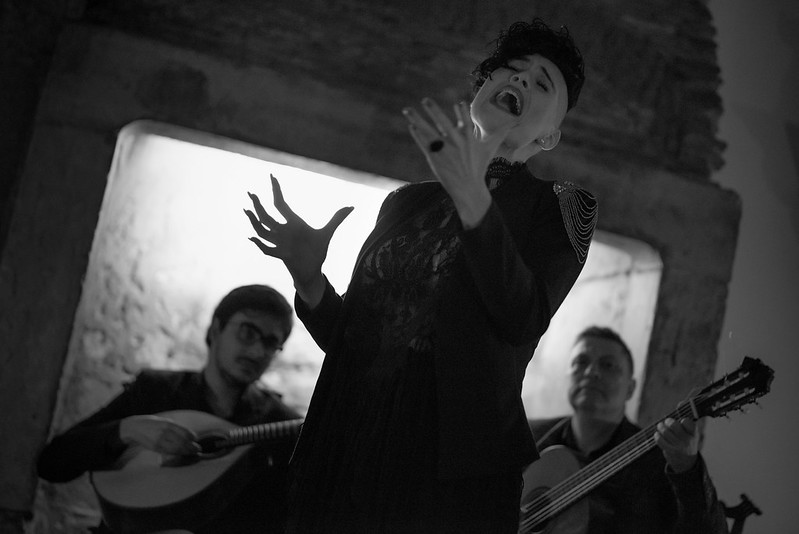
Like Flamenco is to Sevilla, Fado is to Lisbon. It is the folk music of the city that stirs up emotions with its raw form of expression. As dusk turns to night, the sounds of these haunting melodies fill the air of Lisbon. When the singer - fadista - belts out the high-pitched song, you grasp why music has no language. Although you may not understand the words sung, you would still feel the melancholia (and the goosebumps).
Fado sketches in verse the Portuguese concept of Saudade, a nostalgic or grieving longing for an absent someone or something one cares about dearly. It is a bittersweet yearning felt through memories and feelings of the good times of the past. Fado originated in Alfama, where the families of fishermen and sailors resided. Its lyrics are the lament of heartbroken women whose men had sailed to a faraway land or of widows whose husbands had perished at sea.
To immerse in this soul-stirring experience, you need to pick an Adega or a Tasca at Alfama, Bairro Alto, or Mouraria. An Adega is a restaurant that includes a full-course dinner along with the show and requires a reservation. Whereas Tasca is an informal local bar where the performances are impromptu, more authentic, and sometimes carries an element of surprise if a veteran fadista turns up.
As the accompanying musician picks on the Portuguese guitar and the fadista croons to its tunes, you may notice similarities to Arabic music and wonder if the Moorish presence influenced this beautiful ballad-like genre.

0 Comments Add a Comment?